On the agenda was children’s play, children playing, children in plays, any which way you want to mash up those words!
The afternoon: theory and practice about how we might observe wellbeing in children involved in doing drama/ making theatre. (Oh no! So many contested words and phrases already, let’s continue any way.) With a particular reference to our Speech Bubbles project for children in KS1 with a communication need.
Gathered in the room were teachers, artistic directors, practitioners (young and less young) students and the LB+ teenage trainees. I start proceedings rolling with a game, say hello with your eyes, say hello with your eyes and hands, say hello with your eyes, hands and voices. The game has been used this week in school sessions, designed to step up the communication from physical to verbal and especially created to support a couple of young people who feel anxious when first using their voice in a group activity. In order to discuss the connection between communication and wellbeing we work in small groups and made images of moments in our own lives when we struggle to express ourselves or when we struggle to understand what is being communicated. Nods of recognition in the room, “Yes I have felt like that”, moments of enlightenment“ perhaps that is what the children are feeling” and a nice riff about the limitation of making a still image when you want to express a feeling which has movement, in this specific case “agitation”.
We moved on to a section where I am to lead a “model” Speech Bubbles session. Half the group being the players in the session, and the other half using the Leuven Well-being scale (Laevers, 1994) attempt to observe outward signs of well-being in the players. The scale has been used by our researcher Dr Jonathan Barnes together evidence about the impact of the Speech Bubbles sessions on participating children. The observers spent ten minutes getting to know the scale, to understand what they should be looking for; meanwhile the players worked with me to create a story that would form the content of the “model” session. Doing the observation like this was a bit of an experiment for all concerned. For the people who took part in the session, doing the drama games, acting out the story, finishing with a creative reflection. There was a shared, almost unanimous, sense that the observers almost disappeared from the room and then reappeared at the end of the session.
From the observers a sense that the physical signs of well-being increased as the session went on, then perhaps slipped back towards the close. As the facilitator I got some useful feedback “participants were less engaged when you used more words” always good to be reminded.
Two of the people who had come to the session were teachers in one of the schools where we have been running Speech Bubbles for the last two years. They came because small groups of children leave their class every week to Speech Bubbles, they leave happily and came back with stories of games and the acting that they have done. These teachers have seen noticeable improvements in those children and they came along to this session to find out what has been going on! I hope they had some fun themselves.
The evening: A sharing of the theatre making from our 6-8 and 9-11’s groups.
About 90 people gathered, some parents, carers, siblings, and some people who had been to the afternoon session, to watch our youngest theatre makers present the work they had been doing this term. The 6-8’s performed two stories that they had devised around theme of going home and the 9-11’s performed mime games and activities that they had been working on all term. The sharings were delightful, the work was clearly “owned” by the children, the performances were full of wit, joy and exuberant energy and the gathered audience were charmed.
At the end of both of the day’s sessions we asked everybody to think about the following questions, and we gathered their responses…
During the session:
What feelings have you performed or seen performed?
Responses were: “Playfulness”, “Confidence”, “Team-Work”, “The process of performance made some less-inhibited”, “Confused”, “Tired”, “Scared”, “Nervous”, “Shy”, “Jealous”, “Frustrated”, “Happy”, “Creative”, “Competitive”, “Laughter”, “Adventurous”, “Anger”, “Shock”, “Exhaustion”, “Shy/Brave”, “Frustration”, “Enjoyment”, “Freedom”, “Honesty”, “Surprise”, “Cheekiness”, “Wonder”, “Mischief”, “Bravery”, “Fun”, “Bored”.
What did you feel watching?
Responses were: A re-connection with my younger self, Amazed from the vitally and very, Proud and happy to see the children being independent, Surprised, amazed, fun, like there was an element of cheekiness in the air, Happy, enjoyable, it made me smile, Happy I finally go to show, Nervous but practice was worthwhile, Nervous but enjoyed it, Nervous, Anxious, Cheerful, Curious, Confident, Entertained, Grateful, Community, Having fun, Proud, Energetic, Shared excitement, Happy performing, Good to see other group, Feeling free, Different performing in the new building, Nervous performing with a new group, Bit tense, Friendly, Positive energy in the room
Lucy, who is the Bubble administrator and a participant in the adult drama group, noticed the quality of the conversations that were happening between children and adults and participants in different groups, and how this opportunity to reflect was enriching the theatre making experience.
